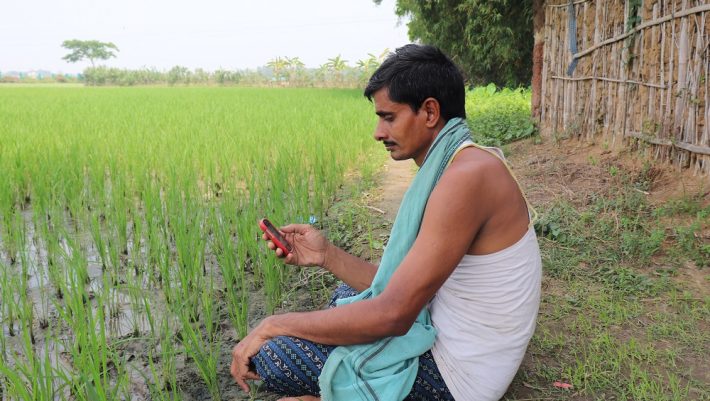Experience of farmers using mobile phone for farming information flow in boro rice production: A case of Eastern Gangetic Plain
- From
-
Published on
11.03.24
- Impact Area

This research was inspired by exploring another technique farmers have adopted: accessing information through mobile phone apps or communication. Mobile phones enable farmers to access information about marketing, new technologies, and weather and improve their knowledge of proper fertilizer and pesticide usage. This available information may reduce the influence of intermediaries in the market value chain. Not only do mobile phones reduce communication costs and enhance output productivity, but they also ensure more efficient marketing practices. This study delves into the impact of mobile phone usage on boro rice farmers in Bangladesh.
Nowadays, agricultural information is considered one of the most important inputs in agrarian decisions regarding production, marketing, finance, and distribution. An information asymmetry exists between rice farmers and traders, as the latter possess superior information at the grassroots level.
This information gap has been lessened by dint of mobile phone devices in recent years. This device has made it easier for farmers to access information on agricultural production, marketing, weather, etc. However, mobile phone penetration rose from 12% in 1999 to 76% in 2009.
In contrast, this figure was just 45% in 2015 in emerging nations like Bangladesh, Malaysia, and Brazil. Approximately 4.7 billion people worldwide have used mobile phones for communication and other purposes, with 147 million users in Bangladesh in 2018.
The use of mobile phones or their adoption depends on several attributes. Rogers’ innovation adoption theory suggests that demographic characteristics play a crucial role in adopting innovative technology. Rogers indicates that innovation diffusion happens when individuals within a social system disseminate it through particular media.
This theory also posits that media and interpersonal communication can influence the adoption rate.
Related news
-

ICRISAT to Deliver World-Class Services as CGIAR’s Breeding Resources South Asia Hub
International Crops Research Institute for the Semi-Arid Tropics (ICRISAT)07.07.25-
Biodiversity
-
Food security
Strategic collaboration to scale innovation and deliver harmonized, high-quality support across CGIA…
Read more -
-

Shaping policy changes for a sustainable cropping system in Uttar Pradesh, India
International Rice Research Institute (IRRI)03.07.25-
Food security
by Dr. Proloy Deb and Dr. Swatantra Dubey The Central Plain region of Uttar Pradesh…
Read more -
-

KOICA, UPLB, IRRI Partnership Establishes a Genomic Powerhouse to Future-Proof Agriculture
International Rice Research Institute (IRRI)01.07.25-
Food security
LOS BAÑOS, Philippines (26 June 2026) — KOICA, UPLB, and IRRI came together to showcase…
Read more -
